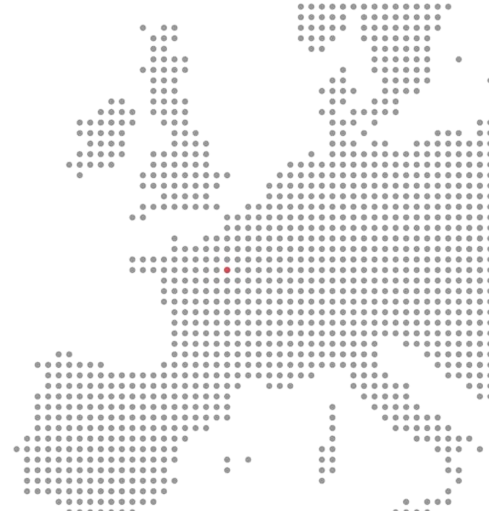In B2B markets, developing or refining a pricing strategy is rarely about crunching large datasets. Most companies don’t have enough transaction volume to generate statistical significance, and even when data exists, it often lacks the context to explain why pricing decisions work or fail.
That’s why expert interviews are one of the most effective tools to build pricing insight when they’re done right. After hundreds of interviews conducted across industries, here are a few principles I’ve found make the difference between anecdote and actionable intelligence.
We previously wrote a case study on how customer insights shaped our recommendations for a tech client.
1. Choose the Right Platform
I’m often asked why we use platforms like GLG or Prosapient instead of organizing interviews ourselves. The short answer: scale, infrastructure, and confidentiality.
These platforms have extensive expert databases that can be mobilized quickly, along with the logistics to schedule, record, and transcribe interviews efficiently. They also handle expert recruitment and vetting at scale, ensuring a consistent level of quality.
Equally important, they keep the client’s identity confidential. This is essential when testing sensitive hypotheses about market behavior or competitive strategy.
2. Why Blinded Calls Matter
Experts are far more candid when they don’t know who’s on the other end or how the information will be used.
Blinded calls encourage honesty. Not because experts are hiding something, but because they’re free from the instinct to please, defend, or tailor their answers. It’s how you uncover inconvenient truths and subtle competitive dynamics that rarely surface in direct conversations.
A case in point: I advised a startup whose growth had plateaued. Their investors assumed it was a packaging issue, that the market didn’t understand the product. The founder was puzzled: every time he spoke to customers, he heard glowing feedback. They loved the idea, found the product innovative, and complimented every feature.
Then we conducted blinded calls with similar customer profiles. The narrative completely changed. Participants openly mentioned features they didn’t need, budget constraints, and gaps in the value proposition. Some even admitted the product created friction in their own client relationships. They saw it as a potential threat rather than an opportunity.
None of this surfaced when speaking directly to the founder, not because customers were dishonest, but because no one wants to crush a good person’s dream. We all have a bias to please.
These findings allowed us to streamline the offer: trimming confusing features, creating distinct packages around clear personas, and dropping chronically underperforming segments to focus on those with real potential.
That’s the power of anonymity: it removes social filters and exposes the truth that drives real strategic progress.
3. The Interviewer Matters
The interviewer defines the quality of the call. A few rules:
-
Talk less. The more you talk, the less expressive the expert will be. Think of it like a date: if you monopolize the conversation, you’ll learn very little about the other person.
-
Use simple, neutral language. Avoid jargon or loaded terms that bias the answer.
-
Don’t insist. If an expert doesn’t know, or is “waffling”, move on. Around 20–30% of calls won’t be conclusive, either because of communication issues or a mismatch in expertise. That’s normal.
-
Expect variance. Out of 10 experts, maybe 2 or 3 will be true standouts: articulate, insightful, and relevant across all topics. The rest still add value through perspective.
-
Probe early. Use the first 10 minutes to test fit. Ask about direct, hands-on experience. If answers are vague or theoretical, drop the call — platforms allow it at no cost.
-
Avoid pressure. Experts are compensated, and when challenged, they tend to move toward consensus. If you insist, you bias the insight.
You’re not looking for the most confident or knowledgeable person. You’re looking for the most authentic insights.
4. Focus on How and Why, Not What
When exploring customer behavior, asking what they do often leads to generic answers: “We evaluate all solutions carefully,” or “We look at quality and service.”
Instead, ask how and why:
-
“How did you actually evaluate the last few solutions you considered?”
-
“Who was involved in the decision and what mattered most to them?”
-
“Why did you choose one supplier over another?”
These questions reveal real-world behavior — the trade-offs, constraints, and triggers behind purchasing decisions. That’s where the insight lies. What people say they value is rarely what they act on when budgets and priorities collide.
5. Beware of the “Consultant Echo”
Some experts recycle polished, generic statements they’ve given in other interviews: “Pricing is key.” “Customer value drives everything.”
That’s when you need to cut in:
“Can you give me a concrete example from your own experience?”
Specificity filters insight from noise. Always chase evidence, not rhetoric.
6. Triangulate Everything
One expert’s opinion is anecdote. Three aligned perspectives are a signal. Five disagreeing is even more valuable — it shows where the real uncertainty lies.
The goal isn’t to collect individual quotes. It’s to map the landscape of beliefs and practices across the ecosystem: customers, competitors, partners. That’s how you turn expert calls into strategic intelligence rather than a string of conversations.
Expert interviews are not about validation; they’re about discovery. When structured well: with the right platform, the right process, and the right mindset, they can reveal how markets actually think and behave when data alone can’t.
In pricing strategy, that’s often where the most valuable insights live.
At KABEN Partners, we regularly use expert interviews to help clients uncover what truly drives purchasing behavior and translate those insights into sharper pricing and packaging strategies. If you’re considering reshaping your pricing approach, integrating expert calls into your discovery process, or simply curious about how this method could strengthen your strategy, feel free to get in touch.
















